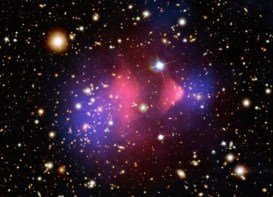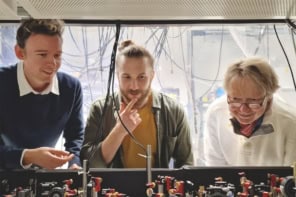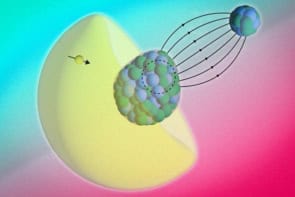Physicists have seen a region of plasma in a single-bubble sonoluminescence experiment for the first time. They have also found that the temperature inside the bubble can reach up to 20,000 K (D Flannigan and K Suslick 2005 Nature 434 52).

In sonoluminescence, the bubbles in a liquid emit light when they are forced to expand and collapse by sound waves. Some physicists believe that the pressures and temperatures inside the collapsing bubbles could be high enough to initiate nuclear reactions. However, the experimental evidence for “sonofusion” remains controversial.
In the latest experiments Kenneth Suslick and Daniel Flannigan of the University of Illinois at Urbana-Champaign find evidence for the formation of a plasma in collapsing bubbles. According to Suslick and Flannigan the formation of a plasma is a prerequisite for a form of fusion known as inertial confinement fusion to take place inside the bubble.
The duo studied xenon- or argon-filled bubbles in sulphuric acid, which has a low vapour pressure, unlike the liquids studied in previous experiments. This means that few if any vapour molecules – which would otherwise absorb too much of the thermal energy inside the bubble and therefore lower its temperature – enter the bubbles.
By analysing the light emitted from a single bubble, Suslick and Flannigan were able to measure the temperature at its surface. To their surprise, they found temperatures could reach as high as 20,000 K. According to Suslick, the emission comes from the plasma formed by collisions of atoms and molecules with high-energy particles inside the bubble.
The scientists say that the temperature inside the collapsing bubble must be even higher than at its surface, but they did not detect any products from fusion reactions. In 2002, and again last year, Rusi Taleyarkhan and co-workers at Purdue University claimed to have seen deuterium nuclei undergo fusion reactions in bubbles in acetone.
“Our results are in such a different set of experimental parameters that they can neither confirm or deny Taleyarkhan’s claims to fusion,” Suslick told PhysicsWeb. “A plasma is a prerequisite but certainly not a sufficient condition for fusion.”
The Illinois scientists now plan to optimise cavitation and explore the conditions generated during bubble collapse. “Is inertial confinement fusion possible in a collapsing bubble? I think the verdict is still out,” says Suslick. “The underlying physics is solid – it is simply a question of whether the collapse can generate a shockwave that is sufficiently intense and remains spherical long enough.”



